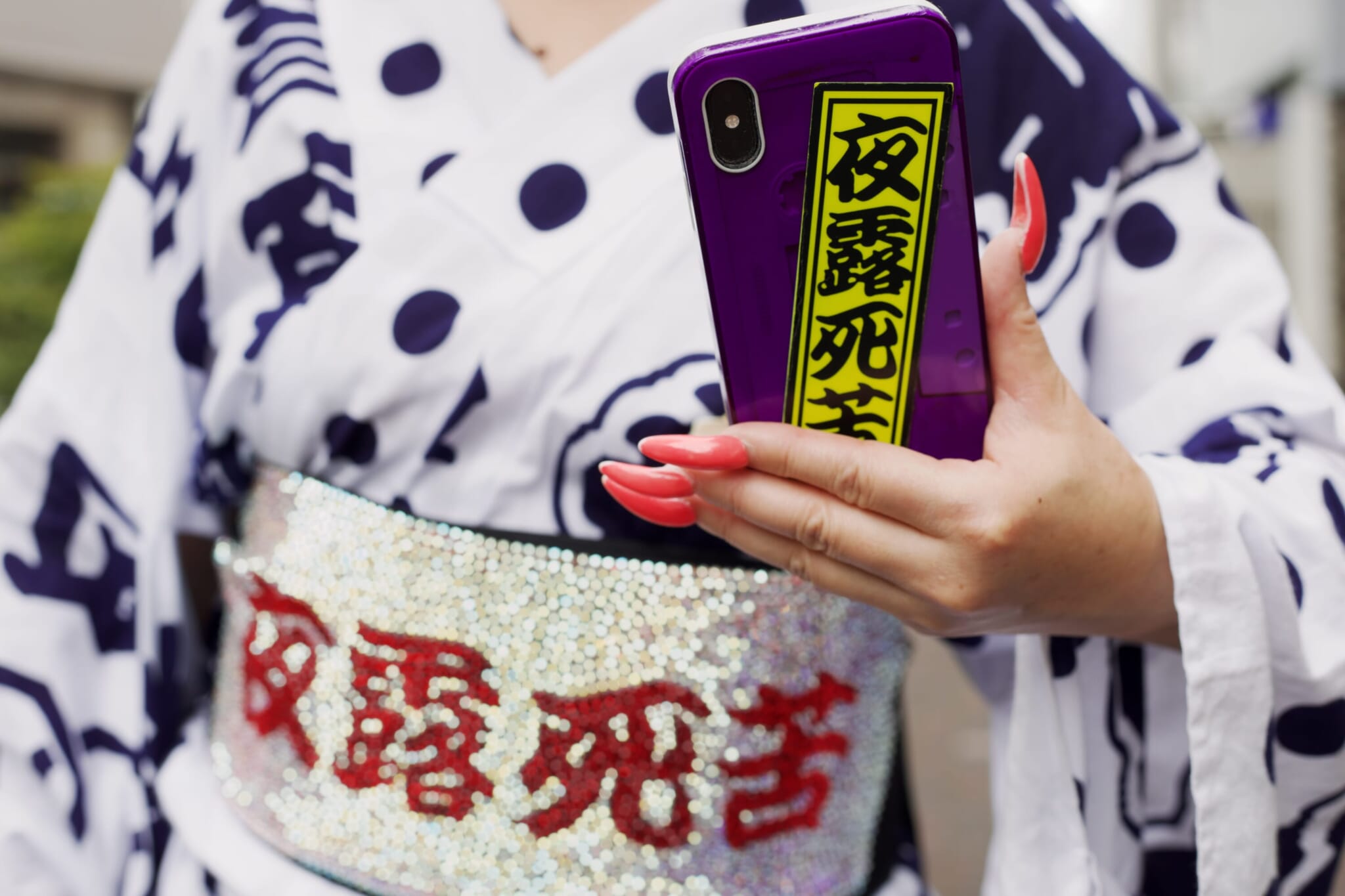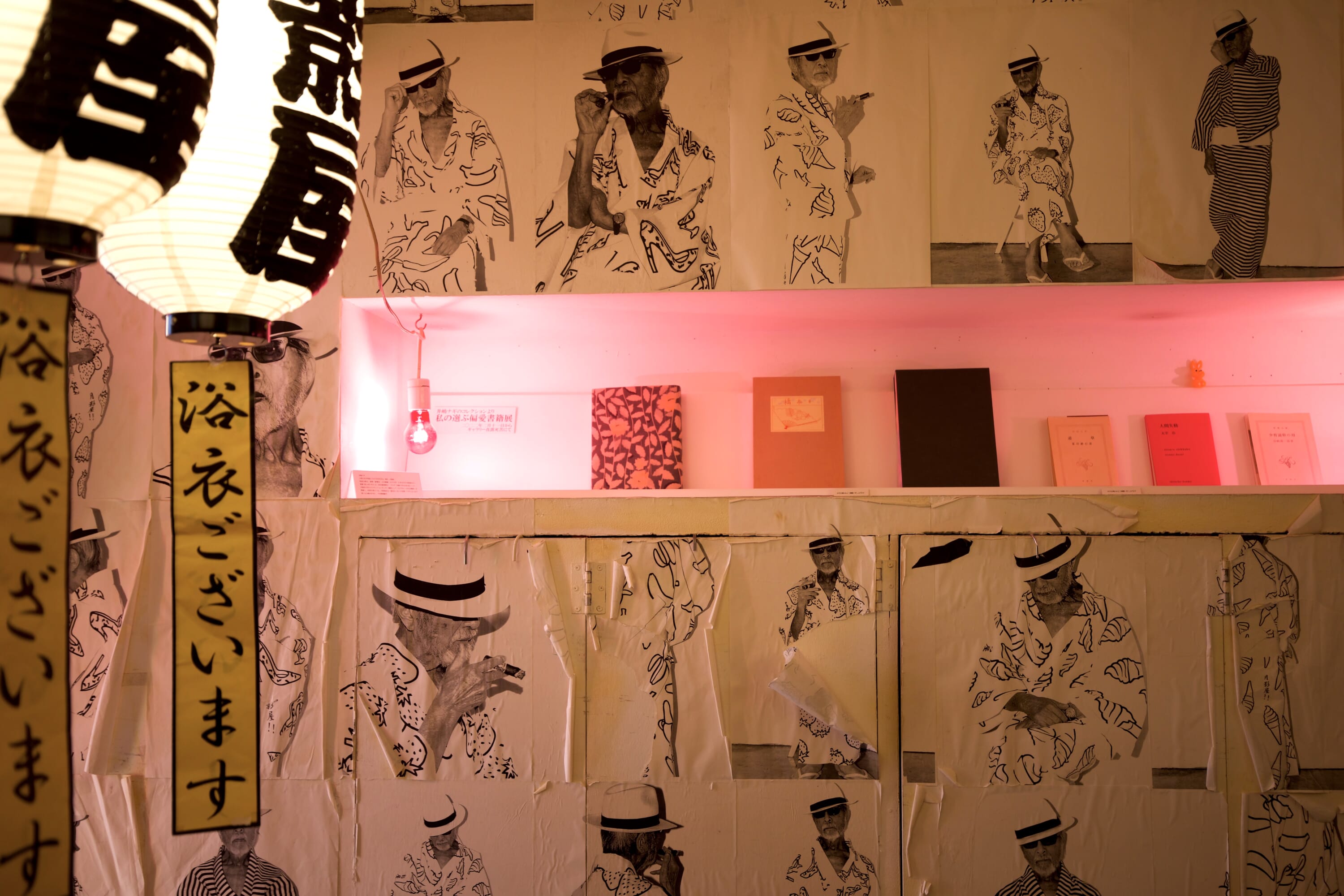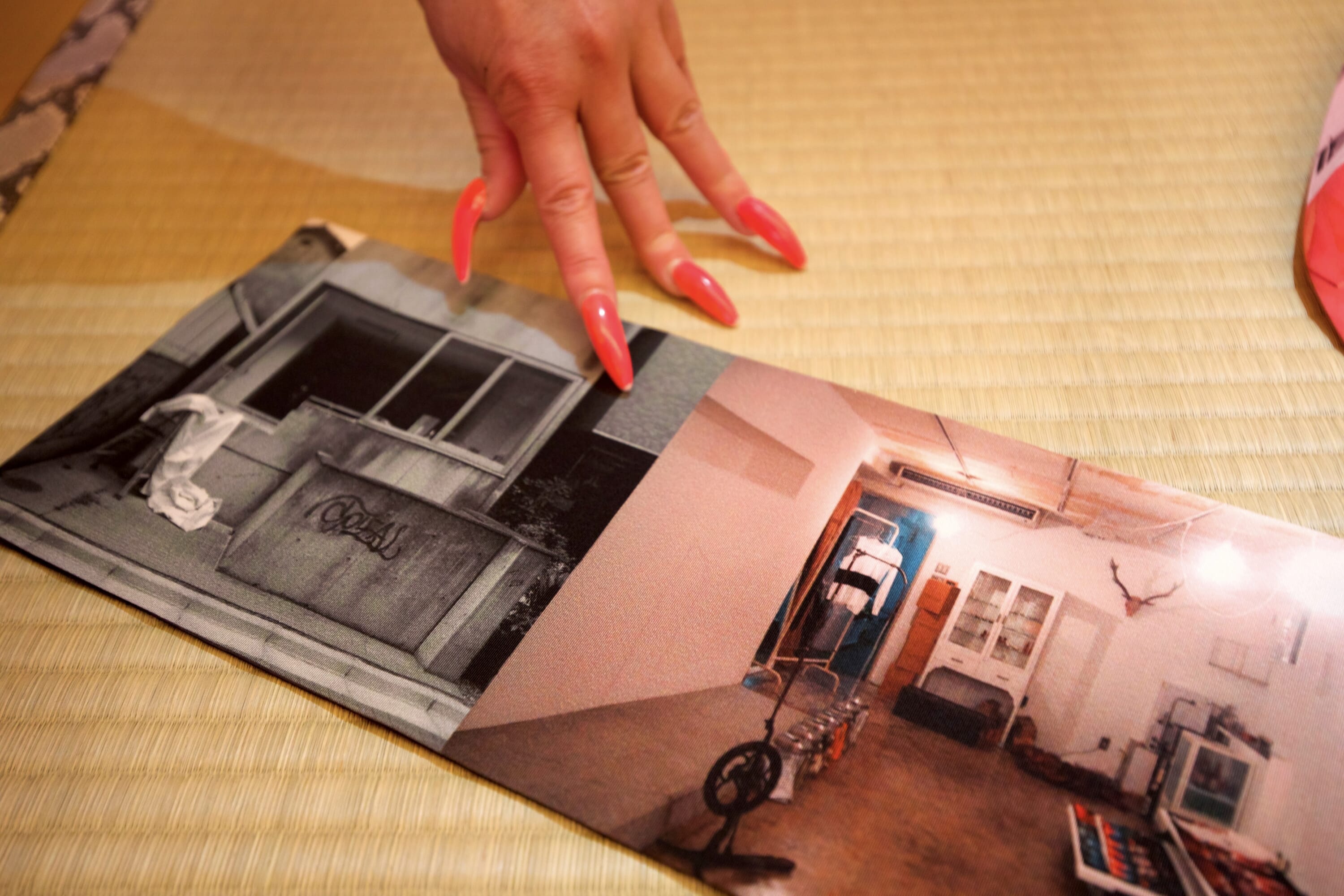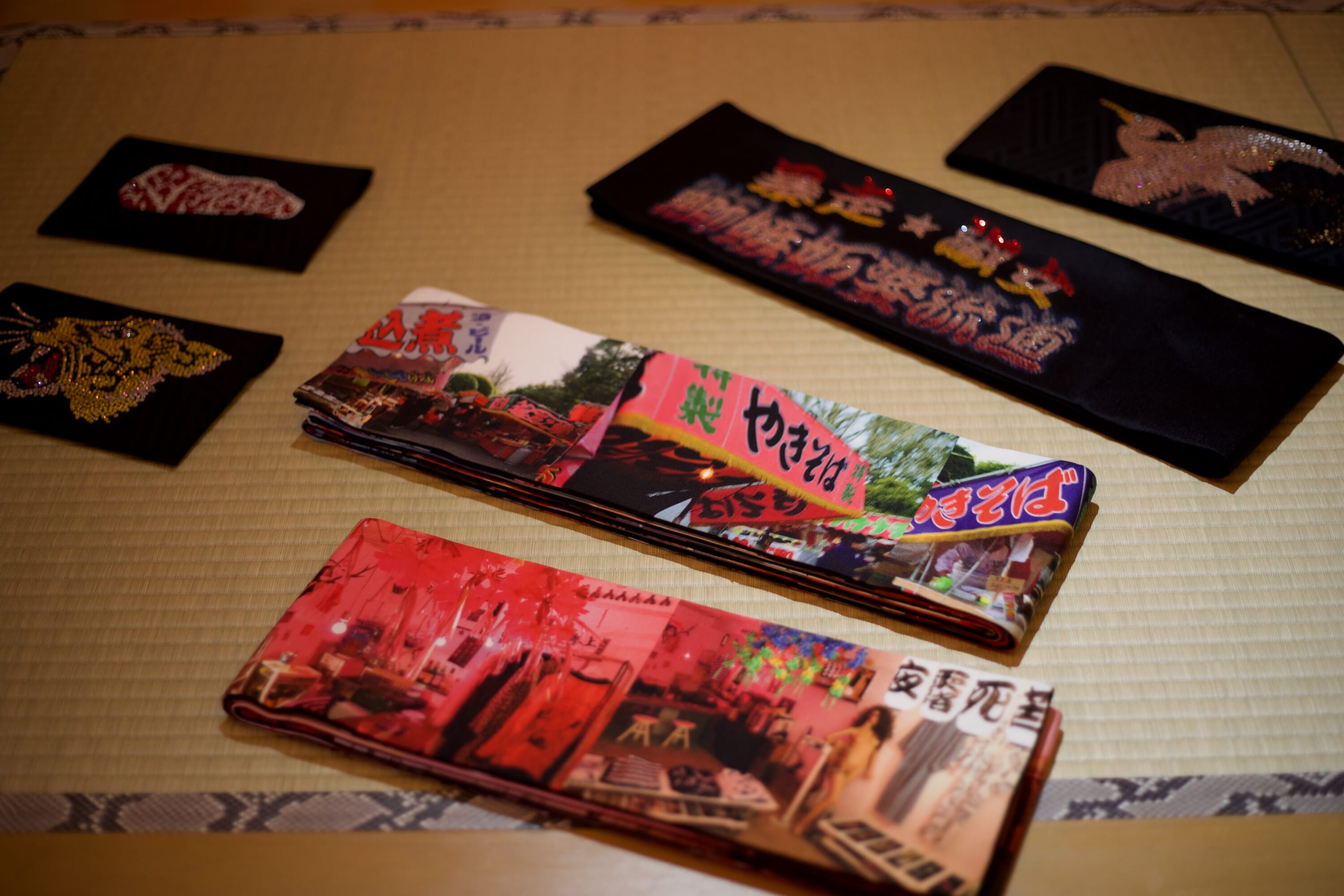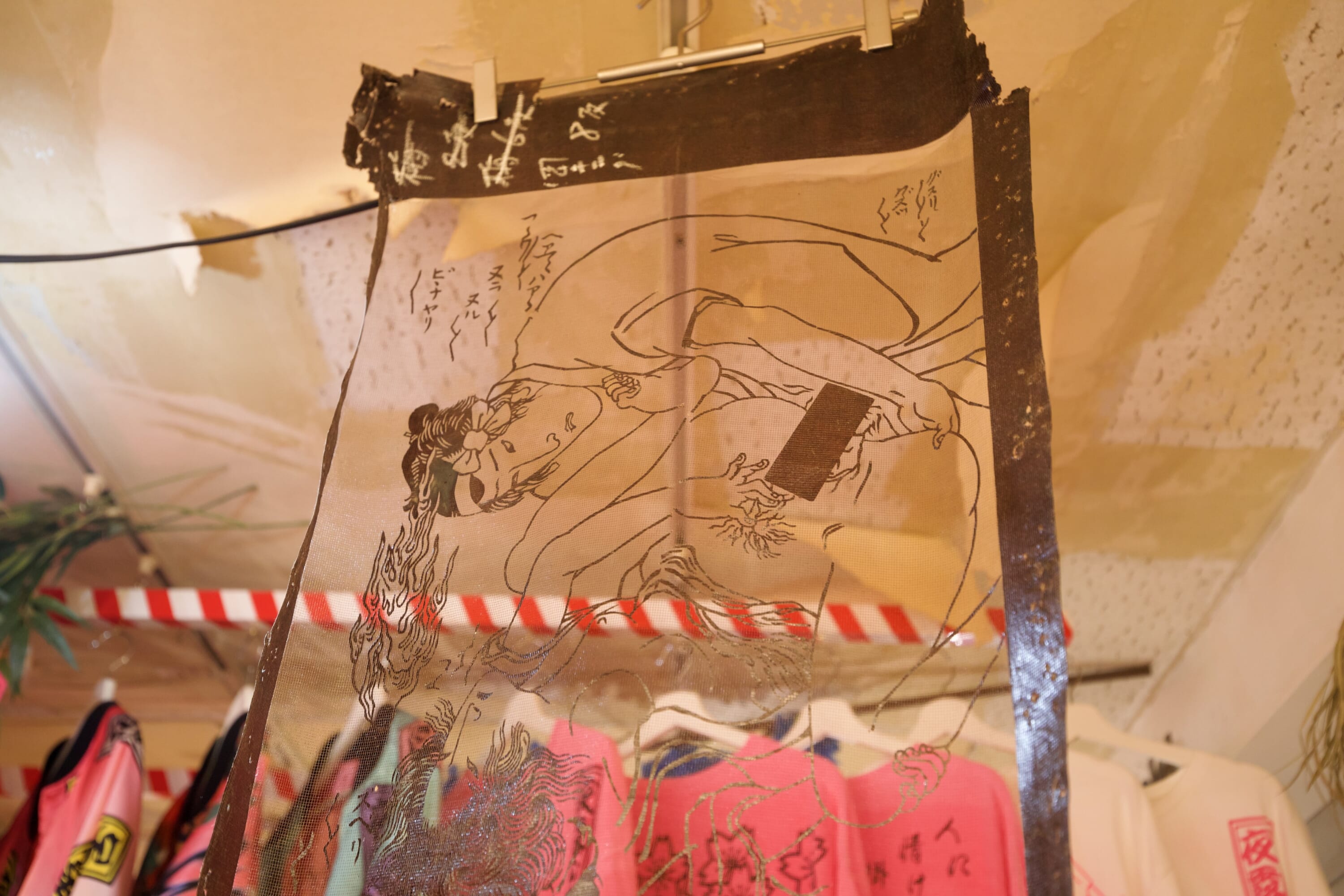An alternative yukata designer and queen of do-your-own-thing, Natsuki Shigeta is a well-loved presence in the subculture fashion world in Harajuku and beyond. “I didn’t study this, I’m just winging it,” she says candidly when we meet her at Tsukikageya, her shop and studio in Shibuya’s Tomigaya district. Shigeta is unmissable with her beehive hairdo and impossibly long pink nails. She can often be seen in a yukata with a bling-bling obi belt. Her friends sometimes lovingly call her the “Japanese Amy Winehouse.”
We invited Shigeta to the TW May-June 2023 issue party on June 9 to do a pop-up shop and exhibit. Spending the day with her, we got to learn about her life and her philosophy.
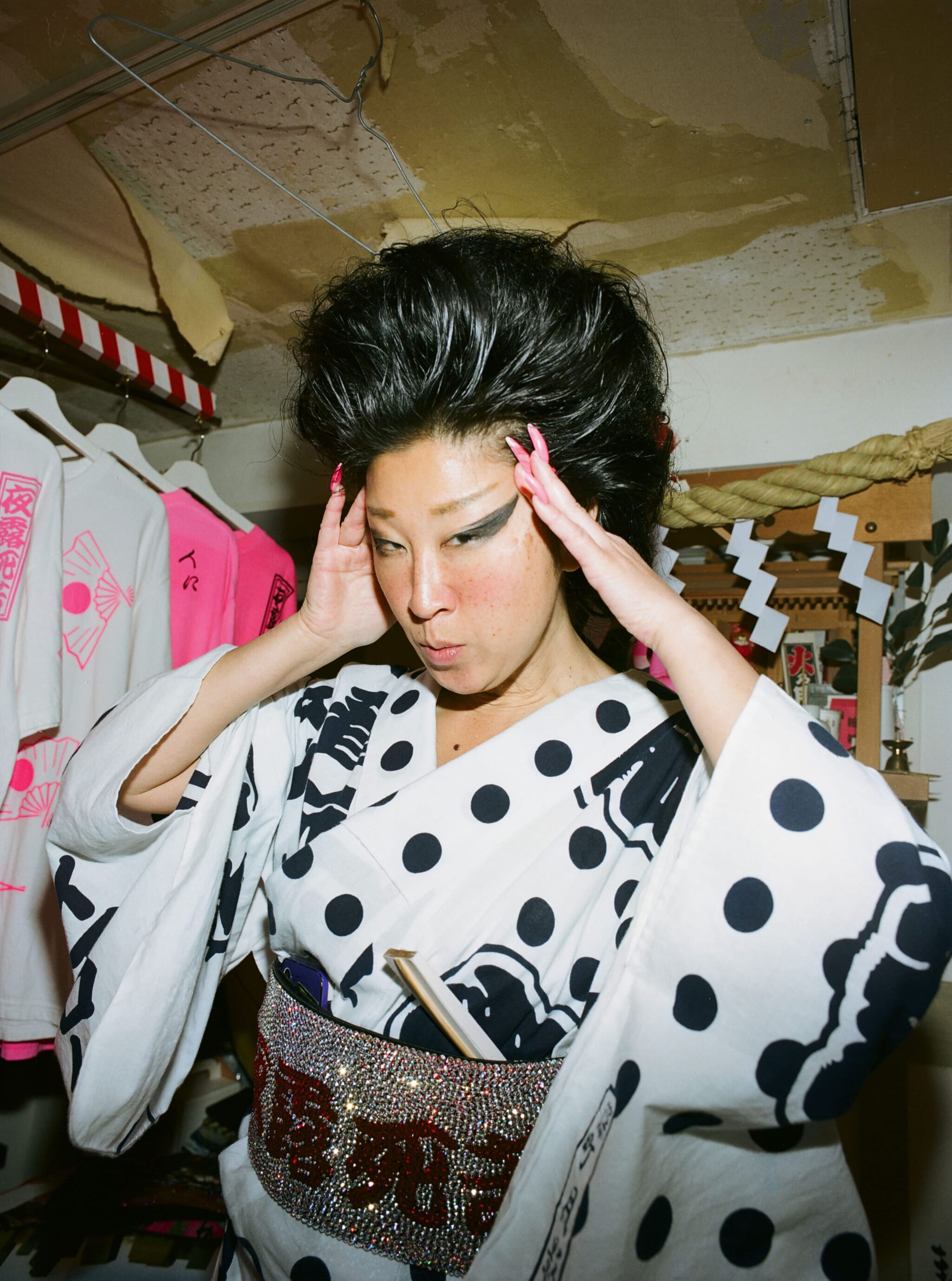
Photo by ©Niccolò Berretta
Tsukikageya Origins
“Tsukikage” is “moonlight” in English, while “ya” means “store.” However, the meaning of the name goes a little deeper than that. “Tsuki,” meaning “moon,” is also part of her name, Natsuki. Letting us further into her inspiration, she also tells us that she used to work on her obi belt designs while listening to Beethoven’s “Moonlight Sonata.”
Shigeta started her Tsukikageya brand in the spring of 2001 and opened her shop in the fall of 2004. Initially not interested in yukata, she focused on designing obi. “I made several types of unique obi, such as leather obi, obi with crystals on them and obi with photographs printed on them,” Shigeta tells us, adding that the flashy style reminds her of the mood of kabuki. “I don’t have influence from kabuki costumes, but rather from the stage set and the moment created by the theater as a whole.”
The photos printed for the obi, she takes herself. They are usually scenes from Tokyo. One of the standout items in her shop she calls “the Tsukikageya history obi.” It shows a succession of photos from a room with blank walls to what it is today. The photos of the Tsukikageya shop span 19 years.
Shigeta designed the shop interior herself too, putting her degree in architecture to good use. She devised a special shelf in the shape of an obi belt (Nagoya obi style). It also has the same dimensions. She has dubbed this “Gallery Yoroshiku” and displays rare books and items owned by friends of Tsukikageya.
There are also traditional chochin lanterns hanging, a little Shinto shrine with a pink flamingo and even a mannequin named Mariko. This is Shigeta’s kingdom, bathed in pink and every square inch is imbued with her design and her unique personality.
A Tsukikageya Yukata is Pure Art
For the first three years of Tsukikageya, Shigeta only made obi belts. “But I thought, I can’t just wear an obi on my naked body. So, I decided to start making yukata as well.” She reminisces about being in a good mood at the time, eating steak in Kioicho and feeling inspired.
“The Kioicho area is where the best ideas come to me,” Shigeta says. She decided to make yukata the traditional way, sewn by artisans and designed by her. Early on she knew she wanted only white and navy-blue yukata. She believes that these colors are the best for Japanese hot and humid summers when the robes are worn most.
“To tell you the truth, the colorful yukata with floral patterns are actually not traditional. They are a relatively new thing that was popularized around the 1970s and 1980s. Until then, yukata were mostly white and navy blue,” Shigeta explains.
As for the patterns of yukata, it’s all Shigeta’s creativity coming out to play. Some patterns are very Japanese, inspired by kabuki theatre or ukiyo-e art. Other patterns Shigeta dubs “silly and in bad taste,” but it’s what makes her yukata special. From cartoon cats to pornographic shunga prints, there’s such a range of designs that some people have asked if there’s another designer behind the brand. “It’s all me,” she exclaims.
Inspiration From Anywhere and Everywhere
As with most art, inspiration comes from anywhere and everywhere. Sometimes it comes from bad energy. When the Lehman Shock hit in 2008, it became the inspiration for her “Money Yukata” pattern in 2009. The yukata with red-soled high heels comes from stepping in gum and then Shigeta’s nightmare about breaking her favorite shoes.
The “Emoji Yukata” from 2016 is in celebration of the Japanese invention that is now used worldwide. “I drew the emoji yukata pattern using only one finger with a children’s drawing tool on my iPad and a unified spirit of having absolutely no corrections,” Shigeta says.
While she designs everything, she outsources the plain yukata making to artisans specializing in the garment. She has connected to a family in Japan’s Tohoku region who only sew for Tsukikageya since they love the brand. It’s all about connection and community. Shigeta talks lovingly of people coming back to give updates on their lives and a fashion student buying a coveted yukata in 24 monthly installments. Occasionally, Shigeta transforms Tsukikageya into a bar for regular customers, who receive special invitations.
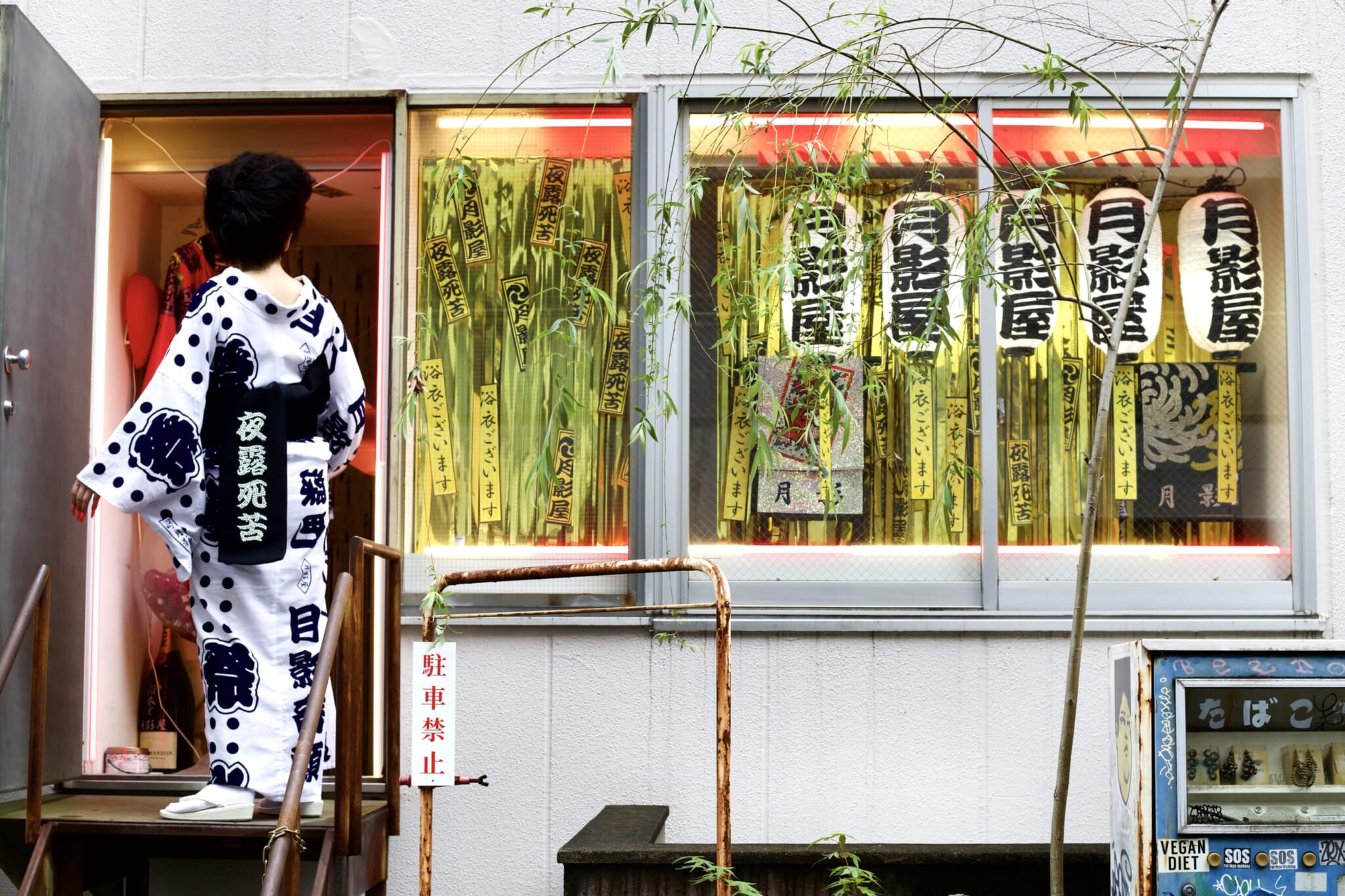
Tsukikageya entrance
Yukata for Everyone
If one’s not keen on wearing a full yukata, the Tsukikageya brand also carries other items with the same designs. These include pouches, stickers, tenugui towels, sets of short pants and shirts worn at traditional festivals, sukajan jackets (satin embroidered jackets) and more. Shigeta, however, encourages everyone to wear yukata from time to time. She believes that if you think yukata is cool, you should feel free to wear it. Just be careful not to have the left collar over the right one (it should be the opposite way).
“Wearing a yukata just makes you feel refreshed. It makes you want to walk with the wind in your face. When you are walking in a crowd with a few people wearing a Tsukikageya yukata, sometimes people around you will open the way for you, which is an awesome feeling,” Shigeta says.
She especially recommends wearing yukata after a bath, as it was its original purpose. “And drink some cold sake,” she adds.
Follow Natsuki Shigeta on Instagram or check out the official Tsukikageya website and online store.
Updated On July 4, 2023

